UNDERGRADUATE RESEARCH BLOGS
The Office of Undergraduate Research sponsors a number of grant programs, including the Circumnavigator Club Foundation’s Around-the-World Study Grant and the Undergraduate Research Grant. Some of the students on these grants end up traveling and having a variety of amazing experiences. We wanted to give some of them the opportunity to share these experiences with the broader public. It is our hope that this opportunity to blog will deepen the experiences for these students by giving them a forum for reflection; we also hope these blogs can help open the eyes of others to those reflections/experiences as well. Through these blogs, perhaps we all can enjoy the ride as much as they will.
EXPLORE THE BLOGS
- Linguistic Sketchbook
- Birth Control Bans to Contraceptive Care
- A Global Song: Chris LaMountain’s Circumnavigator’s Blog
- Alex Robins’ 2006 Circumnavigator’s Blog
- American Sexual Assault in a Global Context
- Beyond Pro-GMO and Anti-GMO
- Chris Ahern’s 2007 Circumnavigator’s Blog
- Digital Citizen
- From Local Farms to Urban Tables
- Harris Sockel’s Circumnavigator’s Blog 2008
- Kimani Isaac: Adventures Abroad and At Home
- Sarah Rose Graber’s 2004 Circumnavigator’s Blog
- The El Sistema Expedition
- The World is a Book: A Page in Rwand
Hello Rabat: The End of a Long First Day
After Chellah and coming back to the apartment, I accidentally slept for three hours.

I guess all the traveling did me in.
But around 6pm, we went to the Addictest center, this sister org to Lankey, my language program. There I met some high school students who are studying to apply to different colleges around the globe. I also met Miryam, one of the cofounders, and she sent me off with this gorgeous Moroccan woman Fadwa to see the Tour Hassan, which is a mausoleum for one of the old kings.
It. Was. Beautiful.
And because I had slept later than I intended and was in a rush to get to the Addictest center, I forgot my camera.
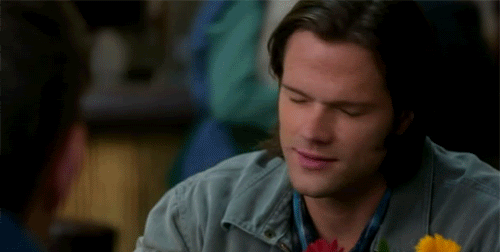
But it’s okay! Tomorrow is a new day, and hopefully I’ll have some pictures of my own by then.
My host sister did manage to take a couple of me at Chellah, thankfully, so here you go!
If you want to make them bigger, just click on them.
A Bad Day for Sandals, But A Fun Adventure
So, I just got back to the apartment with my host sister, Aïda, who has been incredible at shepherding me to and from wherever we need to go and whatever we need to do.
I woke up at 7am this morning, and after a quick breakfast, I asked Aïda if we could take a walk. She helped me get cash in Moroccan dirham, and then we took the tram to the centre-ville and walked around.
I forgot to bring my camera! Otherwise I would upload pics of the beautiful places we saw. She helped me get some new sunscreen, since mine was confiscated by the European TSA, and then we went to a museum, and then to Chellah!
Chellah is a site of old Roman ruins that thrived around the 1300s.
We basically climbed down a long pathway into the ruins. It was rocky, and by the end of it my sandal broke! And I realized that I had also accidentally stepped in some dog poop. So, not great on that end.

Shit happens.
But! The ruins were gorgeous. You can look out from the wall and see plains, trees filled with storks.
Storks are the one, true residents of Chellah. They have nests everywhere. Behind them are cats, who roam the grounds, staring longingly at the mosque towers filled with birds.
Essentially, the roof of the entire necropolis was somehow destroyed, or it simply fell into disrepair, so everything is exposed to the air the elements. You can see the remains of hammam bathhouses, and fountains. My host sister and I even got yelled at by someone who works there, since we were a bit more…strong in our conviction to venture in and see everything.
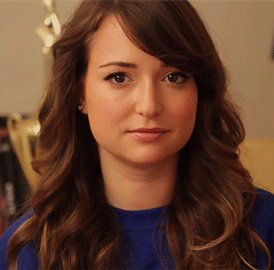
And then, we came back here to rest before I go to meet Myriam, one of the Lankey founders.
I think my biggest takeaway thus far is that it’s been fine to walk around dressed the same way I would be in the US during the summer, and that I don’t have to worry about traveling alone with just my host sister. That was probably my biggest fear before coming here, and when I was getting ready this morning.
Most women here do wear hijab or the niqab, but even if a woman is not wearing those things, it’s fine. My host sister and I weren’t harassed, or stared at. Plus, I also saw lots of women traveling solo. So, if you were ever worried, don’t be. I definitely had worries about how I would need to dress, and assumptions about what I might be able to do and not do as a female traveler. However, my fears have been put to rest now that I’m actually here and I see that it really is fine to dress however I want.
Signing Off,
Kimani “My Sandal is Smelly But I’m Doing Alright” Isaac
Good Morning Morocco
I’m up at 7am, but after all the traveling, sleeping horizontally feels like a dream.
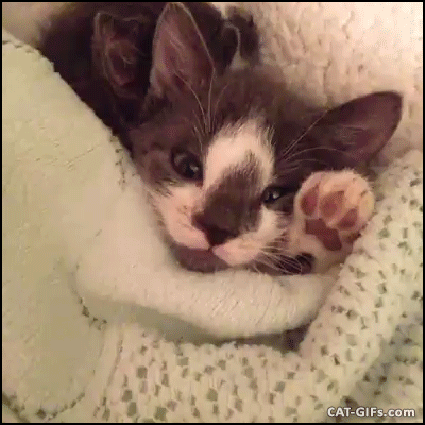
Good morning to the world.
So, here’s what I was too tired to catch you up on last night.
The Lankey program had someone come meet me at the airport, and he helped me get my bags into the car, talk to Myriam, one of the founders, to get my itinerary for the next few days and welcomed to Rabat.
Then, I came to my host family’s apartment. I have two host siblings, a girl who is 17, and a boy who is 11. They’re both really sweet.
They tried to help me setup my SIM card, which didn’t work, but Myriam said that they have someone here who might be able to help unlock my phone. So, around 4pm today, my host sister will help me take the tram to the Lankey center to meet with Myriam. (I love trains. I’m really excited for this). I’ll hand off my phone, get tested on my French, and hopefully by Saturday my phone will be unlocked.
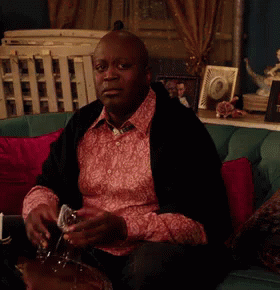
My reaction when she told me they could unlock my phone.
Then, after dropping my bags into my room, I took a shower, and had dinner with my host family.

It was so nice to have a real meal after all the airport food.
I think it’s probably the little things here that make things feel the most different. The light switches are flat, instead of that weird little rectangle thing that sticks out of the wall in America. Showering is different. The blinds on my room are electronic, which is really cool. All in all, I’m excited and grateful to be here.
Finally in Rabat
- I finally made it to Rabat!
I got on the plane in London, and honestly fell into such a deep sleep that I have no memory of taking off.
I woke up midway through like

We had already taken off, climbed 30 thousand feet, and I slept through all of it.
But it finally happened! I am safe, sound, and in Rabat Salé, ready to learn more French.
Now first, sleep.

Third Leg Pt. 3 Journey to Rabat: London Layover: Will it Ever End?
Well, I went through security…again.
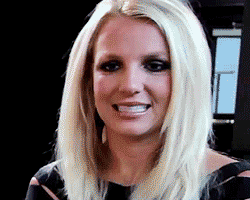
Word to my American travelers:
You know how the US is like: quart size bag for liquids?
Well, the UK is like: everything needs to be at most 100ml and all your liquids have to fit in a clear plastic bag with the proportions of a hallmark gift card.

So, I am now down some sunscreen, bug repellent, face cream, and I dumped out the saline solution made for my new ear piercings, which need sterile water.

yaaayyyy….
at least I can remake the saline solution. I just need salt and water that’s been boiling for a while.
On the bright side, I packed tums, which came in handy for my upset stomach. I no longer feel like I’m going to be a public embarrassment to the US. My worst case scenario didn’t happen: I didn’t have to puke into a public trash can because I couldn’t get to the bathroom fast enough.
(But let’s be real here, our politicians are embarrassment enough).

Laughing to hide my pain.
Also, big upps to the Stansted Airport security staff, who are genuinely some of the nicest, most gracious and helpful staff on the planet.
Here’s the scene:
Me, not understanding the rules about liquids and frantically standing there trying to figure out that I was going to have to let go of stuff while people in line behind me waited for me to get my ish together:

The Security staff woman who came over to save the day:
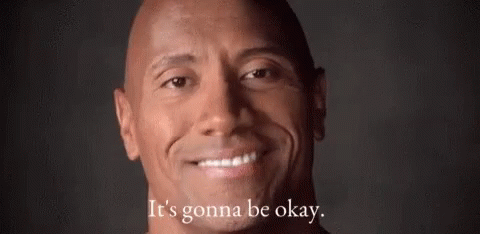
She pulled me aside to a different table so I wouldn’t have to rush. She told me that for things like aerosols and what not I could take the cap off so it could fit into the clear bag as long as there was no spillage. She really came through. Even helped carry my tray back to the conveyor belt.
And then, my stuff went through!

but then I got pulled aside to have my stuff checked…again.

But it wasn’t my carry on? You know, the one with the decorative tins passed through fine, even though literally the two other American airports flagged it for extra handling. It was my backpack and laptop that were flagged this time.

Literally very few things about airport security make any sense.
So, in conclusion, there is no rhyme or reason to anything and probably everything is awful.

Despite all that, I made it through security for the third time in two days, and I found a nice café to sit in where the wifi is a little spotty but has numerous outlets because they know what millennials really want.

The international arrivals section of this airport needs to get it together and get some damn outlets.
And thankfully, the adapter I brought with me had a plug for the special, fairy snowflake outlet with flat prongs that London uses, so I can charge my laptop while I write this. (I got the best adapter rated on Amazon and it’s just one of those things that’s really worth it. It’s by Besttek and it was kind of expensive but thus far it has come in really clutch).
I gotta say, I’m ready to be done with airports for a little while. My shoulders hurt, I could sleep for a week, I’m saddle sore, and the first thing I’m doing when I get to my host family’s residence is probably going to be a shower. Or a bath, if they have one.

I hope they have a bathtub so bad…
Signing Off,
Kimani “Everyone says I’m going to be a different person after these 8 weeks but right now it just feels like a lot of mayhem” Isaac
Oh! BY the way,
My phone company got back to me via email, said that their unlock signal went through, but that I would have to be in the US for it to take effect


I’m not fine.
Third Leg Pt.2
Well, I went to the bathroom, brushed my teeth, and put on some sunscreen, so I’m feeling more human.
My stomach has also settled down some.
Stansted airport is…interesting.

I can’t say it’s bad, necessarily, but it’s definitely not ideal for a long layover. There’s not any publicly available outlets, which seems a bit strange to me. Then again, I’m still in Arrivals since I can’t go through Security and make my way to the gate until a few hours from now. Theoretically, I could just be in the one crappy part of the airport that doesn’t have any outlets because maybe there’s some nice lounge elsewhere I’m supposed to be sitting in.
Either way, here I am.
You know, for a country that used to be the seat of an empire, that literally colonized more than half of the globe and had a direct hand in its Westernization, and which still loves to tout itself as a wonderful place to be, all I’m saying is, this airport could have at least included some public outlets.

They stole wealth from the rest of the world. All I want is a little electricity.
In case you never noticed it before, airports are weird. Every shop here is in miniature. Everyone is coming, going, waiting, or watching it all happen. Everyone looks tired, older than they probably are, and even men, it seems, have adopted Resting Bih* Face.
Things that are normally private are also now semi-public, like when I had to brush my teeth earlier. I am also displeased to tell you that women’s bathrooms here are overcrowded and have a line, too.
(Why is our species like this? Have there been studies on this? Why is there never a line of men outside of the guys’ bathroom?)

I am just confused.
I have a 7 hour layover here and I was going to leave, take a train into London, walk around for an hour and come back, but I decided against it. First, the train tickets are kinda pricey round trip. Second, there are so many variables that could go wrong, especially without being able to use my phone’s map. I didn’t want to end up missing my last and final flight.
So here I am, in hell.
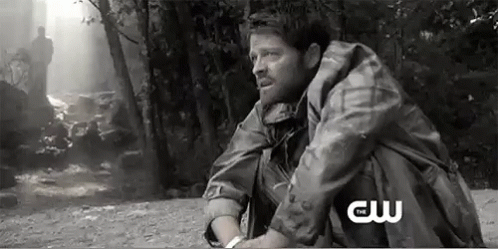
Well, it’s more like purgatory.
You know, I should end this post here for the sake of pacing, or not boring my reader, but frankly I don’t know what to do with myself. I have never been good with doing actual things when I’m in transit. I brought things I could occupy myself with. I have my French textbooks from the academic year, but I’m worried that I’ll be too tired to actually remember anything. Plus, staring at a book isn’t going to help me stay awake. I don’t want to miss my flight because I fell asleep in the same airport I’m flying out of. It would make for an AMAZING story, but only because it would actually be terrible to live through. So I’ve resolved to essentially write this and be on my computer until it dies.
Wish me luck. It’s a long layover.
Third Leg of the Journey to Rabat: London to Rabat
Let this post be otherwise known as: the moment traveling became a boring, frustrating mess
It’s Day 2, hour something or other, and I’m currently mildly nauseous, sitting in London’s Stansted airport, waiting for the counter for my flight to Rabat to open.
There are also two cleaning staff in front of me loudly scraping gum off the floor. It is unfortunately the most annoying sound in existence, right behind the British accents currently surrounding me.

British accents in America sound sexy and posh. Here, in their natural element, to a sleep deprived, tired, sore-butted girl who would currently love nothing more than to throttle someone at her phone company, they just sound nasal and remind her of times when a classmate she went to school with irritated her days with a fake British accent.
And a baby just started screaming at the top of it’s lungs.
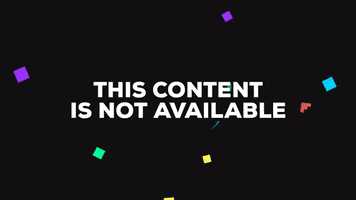
And I have 5 and a half more hours to go inside this airport.
This blog is currently holding me down.
So, why do I want to throttle my phone company?
Well, I called them three days ago to unlock my phone and after I’d bought a SIM card to try and call home here in the Stansted airport, I saw that my phone said, “UICC unlock failed. Your phone is only able to be used on Sprint SIM cards.”

Just trying to focus on breathing in and out.
I also realized an hour in on the flight to London from Boston that I forgot to call my card companies.
Never let anyone tell you that travel is easy.
I’m also nauseous? I finished a bagel with cream cheese that I brought with me from Evanston and I think the cream cheese is messing with me. Or the sleep deprivation is turning my stomach.
Also, it’s noon in London and therefore 5am back in Chicago right now so no one is awake to read this.
Word to the wise about the phone situation: I will probably switch phone carriers and buy a new phone the absolute next chance I get if the company doesn’t email me back with a solution. If you’re going abroad and you use Virgin Mobile and a Sprint phone: run. Run and don’t look back. Run until you are in the arms of your family plan on another network or something.
On another, unrelated note to underline how soul sucking this part of the journey is: These golf cart like things ride back and forth in front of me from time to time at 3 mph and they let out intermittent blaring noises.
I think I just discovered a new level of hell or something.
I’ll try to post again when I land in Rabat. But I have 5 hours here, so you might hear from me again real soon.
Second Leg of the Journey to Rabat: Boston to London
So, I made it to Boston safe and sound, thank goodness.
I only have 20 mins until I get on my flight to London, which doesn’t have any wifi, TVs, or hallmark of modern technological civilization, apparently.
It’s fine. I’m not panicking about being on a metal bird for 6 hours with no wifi…not one bit.

Can you tell I’m lying so hard?
So, this part of the journey is difficult. I’m a little under halfway through and I can smell that my arm pits are working overtime to thrust me into embarrassment about the way I smell.

My luggage got flagged to be opened up again, which I think is definitely due to my tins. But they were also flagging like every other piece of luggage going through the machine, so who knows?
Anyway, I finally got through security and went to grab some food, and I ended up sitting with two French women. So I got to practice my French, at least! It was really nice. They had just visited NYC, and since I’m from there we got to bond over our mutual love for New York.
The sun sets beautifully in Boston, and it’s become a nice opportunity to relax after the hectic bustle of this layover.
I have a cousin who goes to Boston U, and it turns out that she’s flying in at 10:30! I thought I would get the chance to see her, but my flight leaves at 9:40. We’re going to just miss each other.
Wish us travelers luck!
First Leg of the Journey to Rabat: Chicago to Boston
*Blog Post Content Warning: This post contains mentions of period products and personal pleasure toys because the TSA be like that sometimes*
So I’ve got two layovers: one in Boston, one in London.
I just went through O’Hare security, and I’ve got a story about good old security check, but first I want to tell you a little story about the O’Hare Kiss N’Fly, the airtrain to each terminal.
It’s currently under construction. I take the $2 250 Pace bus from campus to the Kiss N’Fly, and when I get to the airtrain, there’s a bus to take passengers to each terminal instead of the airtrain.
Fine. No biggie.
….Except that the parking lot surrounding the Kiss N’Fly is a Jungian, Joseph Campbell inspired maze that if MC Escher had gotten his hands on, would have probably made even him go like, “Hmm, seems a bit complicated.”
The bus ride took a half hour and we spent 20 mins of that looping around the parking lot so the bus could exit.

It’s fine, everything is fine.
So anyway, I finally get to my terminal, and then I go to check in my luggage, which is 9lbs over the 40 lb limit Spirit imposes, but this part is actually okay, because I know exactly what to take out. It mostly boils down to a French book I wanted to bring with me, a bottle of green tea I’d forgotten to take out of the bag from breakfast, and a metal water bottle I hooked onto my backpack.

Smooth sailing…
So, I go through security, and Lo! and Behold! I get pulled aside to have my stuff searched.
Before I jump to racial profiling, I do think this part is because I pack my small things in decorative tins, and this probably comes up as a red flag with the TSA agent. I have two more opportunities to go through security on this trip to Rabat. We’ll see how it plays out.

Actual footage of me going through security
So, the TSA agent checking my luggage, she opens one of my tins, which has my period products in it, and I tell her, “That has my period products in it.”
She gives me a funny look, as though I’m mildly amusing and yet she says, “You don’t…you can just say panty liners.”
And I laugh to myself because she thinks I’m ashamed to talk about this. She has no idea what’s coming. I go, “Well…but, they’re not. They’re called Flex cups.”
And then I explain/advocate for my period products. Flex cups are basically a alternative to pads/tampons. They’re plastic or silicon disks that you insert to catch your blood, and then pull out up to 12 hours afterwards while in the bathroom. I personally find them much more comfortable than pads and tampons.
So I explain this, and her mouth is slightly agape, which I find inwardly really amusing considering she’s getting paid to rifle through my stuff and it’s my most intimate products are in my carry on. Somebody’s got to feel flustered in all of this, and it’s not going to be me when I haven’t packed anything illegal.

I feel like a gremlin whenever this happens but I’m not sorry.
She points to one of my packing cubes after putting my period stuff back. “What’s this?”
“Bras, underwear, socks.”
Her hands, about to open the cube, promptly move to the next thing. She unzips the other half of my suitcase and pulls out a small bag I’ve packed.
“What’s this?”
“It’s condoms, lube, some painkillers, and my vibrator.”

Better to be safe than sorry, should the moment arrive while I’m abroad
She immediately puts it down, lifts her hands up as if I’m an officer, exhales, and repacks it, shaking her head and vaguely smiling like someone who can’t quite believe this is happening.

Next we go through my liquids, my makeup bag, and while she’s repacking my stuff, she asks the famous, age old question. “What are you?” Her eyes search my face, as if she could figure out my background that way. I go through it with her, telling her that both my parents are mixed, etc, etc.. She actually makes a keen observation, that I have to check the “Other” box on forms, we have a brief convo about it, and then she sends me on my way.
So here I am, waiting for my flight to Boston. Cheers.
All is Quiet on the Midwestern Front
I finished my finals last Thursday, and the past five days have been a blur of packing. I have flashbacks of my things strewn everywhere, until they got folded and then pressed into a cube of cardboard, ready to be stored in a friend’s apartment.

It’s amazing what college can do to sabotage your cleaning habits.
If you’re a prospective student reading this, or just someone who thinks they may one day be in my position, late stay is your best friend and your worst enemy. Late stay is essentially the university giving you permission to stay in the dorms for a few days after the official end of the quarter. It’s your BFF because you don’t have to sleep on someone’s couch and figure out what you’re going to do about all of your stuff, nor do you have to stay up all night putting said stuff into boxes so your’e not charged a $100 late move out fee. But it’s your worst enemy because once everyone moves out, the dorms morph into a post-apocalyptic horror movie in which, you, (yes, you, congrats) are the main character trying to not get freaked out when doors creak in the night.

Not today, Satan.
In addition to your existential fear that death is lurking behind the door of the dorm room your neighbor just vacated, the cleaning crew that Northwestern hires (who do their jobs extremely well and definitely don’t get paid enough for putting up with the messes we leave behind) are in the buildings the very next couple of mornings at 8am, doing what they gotta do. Meanwhile, I was trying to recover from two weeks of finals-driven sleep deprivation because I’m careening towards 24+ hours of travel time across three continents. But it’s fine…I’m not bitter.

You couldn’t have scheduled these crews for a little later in the week, Northwestern?
Pro Tip: I had to clean some new ear piercings while writing this, and because I am living out of two suitcases now that all of my belongings are in storage, I was reminded of this amazing invention I wish I had owned 0275760285 years ago:
Packing Cubes.
I know, I know, I know.
Packing cubes?
…………………………………………………
………………??????????????????????????????????????????????????????????????????????????????????
(what the hell kinda hash is this girl smoking?)
Hear me out.
I realized that I was gonna be living somewhere completely new for 8 weeks. I had to up my packing game. I did some research, read some articles, and I decided packing cubes were gonna be the way.
And they’re so much better than I even expected them to be.

I am an over packer by nature, so I make spreadsheets to theorize what the bare minimum is. Packing cubes laugh at my idea of bare minimum. They give me so much space. Everything fits neatly. I can bring twice as many shirts as I thought I could. Maybe it’s a mental trick, and I would’ve crammed the same amount of things into my bag anyway, but it was so worth it. Even if I’d crammed everything in, it would’ve been a mess. At least now I know what cube has my shirts, my shoes, my hair bottles, etc.. Buy yourself the packing cubes that are the best rated on Amazon and go. to. town. They’re like little luggages that you put inside your bigger luggage. Except they’re flexible and they fit neatly next to one another. It makes you Mary Poppins.

Who knows? Maybe Narnia is going in my bag next. (Do you think I could put a portal to Chicago Pride in here?)
Nothing can stop me! It’s Tetris, but better.
ANYWAY: I got sidetracked, and no, this blog post is not sponsored by Amazon.
It’s T-2 Days before I fly halfway around the world.
Can someone help me figure out how international SIM cards work? XD

Toodleoo.





